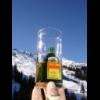can anybody clear up what the numbers mean?
is it something to do with the thickness and then the viscosity of the oil?
The numbers refer to the thickness (viscosity)of the oil at certain temperatures.
Before multigrade oils you had single grade. These were went from 0w -25w, which were considered for winter use, as they were thinner and had they're own set of standards , the lower the temperature, the lower the number needed. Then there were the summer grades which were 20 - 60 and had they're own set of criteria to meet. So you would fill with appropriate summer oil and then change to the recommened winter oil in winter as the summer oils would get too thick in cold conditions and winter oils too thin in summer.
Most multi grade oils have additives which get thicker with temperature, so the oil doesn't get so thin at higher temps and you have an oil that meets say a 20w criteria for winter and also the 50 grade criteria for summer. 20w50, an all season oil.
The problem is when the additives breakdown the hot viscosity is lost, ruining the oils ability to lubricate when hot. I.e. it reverts back to being a 20w single grade.
This is the beauty of synthetics, they are more temperature stable in the first place which means you can make them to do the same job with less thickener additives so that they don't degrade so quickly. Or on the other hand make them so they have a very wide temperature range such as a 5w50. This means you get better gear changes, better power and therefore better fuel economy from cold and the hot thickness hasn't changed at all. from a 20w50. Hope this helps.

Edited by TimmyG, 31 July 2010 - 11:14 AM.



















